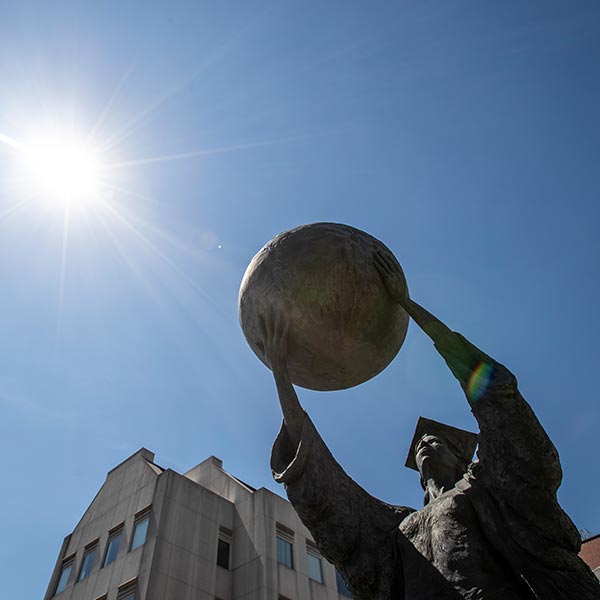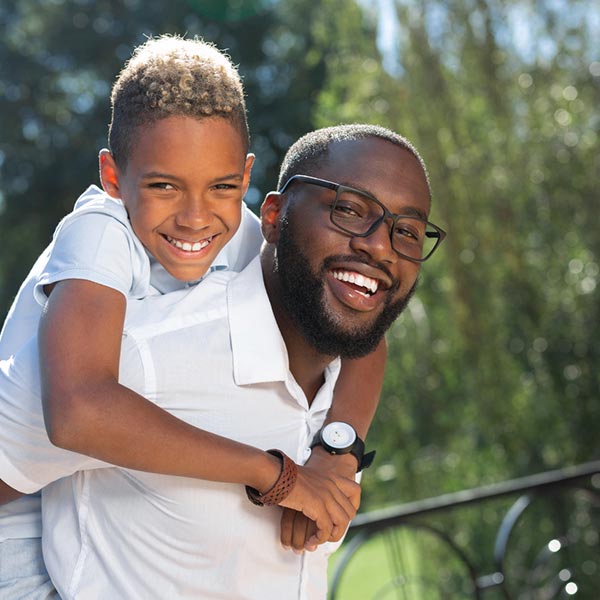Author Note
Peter Kageyama, Senior Fellow, Alliance for Innovation; Independent Author.
Correspondence concerning this article should be addressed to Peter Kageyama. E-mail: peterkageyama@gmail.com
For the Love of Cities—2020 and Beyond
I am known as the “City Love Guy,” and it is my job to be relentlessly positive about cities, towns, villages, burbs, exurbs, etc. So, it is not typical for me to lead with a negative, but here goes. 2020 sucked. Let’s just say it. By any objective measure, it was an awful year: The pandemic, the senseless deaths of George Floyd, Breona Taylor, and Ahmaud Arbery (and many others), job loss, economic turmoil, stress, isolation, and political divisions that run so deep they seem to draw blood. When something is awful, human nature wants to move quickly past it and try to forget it. However, I think it does us all a disservice to simply brand 2020 an “awful year” and move away from it as if it were a bad smell.
This past year has been hard—and things will likely get even harder before we find a new equilibrium that feels “normal” again. While it is hard, now is the time to think about what trends and opportunities have come out of 2020 and what lessons we have learned.
“Fleeing the City”
In 2020, there emerged an idea that cities were receding and that suburbs and rural areas were going to see major population growth. Some believed that the pandemic would unleash an anti-density wave that would move more and more people away from bigger, denser cities. Certainly, there was short-term evidence of this movement during the pandemic’s height in 2020, as story after story highlighted people moving out of cities like New York to suburban locations. Indeed, New York was one of the hardest hit areas during the early days of the pandemic, so it makes sense that many, especially those with the economic means, sought to move elsewhere.
Even before the pandemic, the popular rise of urban living that began at the outset of the 2010s had significantly slowed, especially in large metropolitan areas. The Brookings Institution noted that population growth in those major metros slowed to a low of 0.55% in 2017–2018, down from a high of 1.01% in 2011.[1] Growth in highly dense urban cores also fell from a high of 0.8% in 2015–2016 to 0.1% in 2018–2019. The pandemic further fueled this trend and, in many cases, accelerated the process.
Some, such as author and “suburbanist” Joel Kotkin, have suggested that this trend will be enhanced by the option for many to telecommute, as people leave urban environs for suburban areas. Though the pandemic and remote working are significant factors, Kotkin and others have argued that the middle class has exited these cities because of its inability to deal with issues such as homelessness, quality schools, and crime.[2] As Kotkin described, “The politics have gotten crazier and crazier.”[3]
Because the urban–suburban divide in the United States has a long history related to race, it is hard not to see this narrative through a racial lens. Couple it with President Donald Trump declaring, in the summer of 2020, that he wanted to move affordable housing and affordable housing requirements out of the suburbs[4] so that suburbanites would “no longer be bothered or financially hurt by having low income housing built in your neighborhood,”[5] and we see the racism and fear mongering laid bare.
All this led to the emergence of a popular narrative about people “fleeing” the city for suburbs in the wake of the pandemic. There has undoubtedly been an upswing in people moving from the largest cities, and I believe we will see a general loss of urban population once the latest census data have been sorted out. Yet, to suggest that people are fleeing cities vastly exaggerates the trend and I believe misapprehends a more obvious factor: They are running from the expense of urban living.
Unemployment and economic uncertainty will nudge some to look for less expensive housing options, or they simply will need to follow jobs out of urban areas where many companies are downsizing their office-space requirements and encouraging more telecommuting. Others, such as families with kids, will decamp to suburbs and rural areas. However, families with kids or families on the pathway to having kids were already on the road to leaving the city. Families with children move from urban to suburban areas for multiple reasons—space, access to what they perceive as better schools, and, the most basic reason of all, cost. Kids are expensive, and urban living is expensive, too. Something has to give, and most conscientious parents will choose their kid over their loft every time.
Elderly populations more susceptible to health issues will similarly look to less dense options. However, the forces that drove them into the city after they became empty nesters—too much living space, walkable communities, less housing maintenance and upkeep, and more social offerings—will likely lead many (perhaps even most) to stay in place.
The net result is that some will leave, cities will get a bit younger, and they will become more equitable. The economic pressures of reduced office-space requirements for companies and increased availability of housing will make some, maybe even most, cities more affordable. More affordable is synonymous with more open and more fair—a very good thing. This influx of new residents will bring new ideas, new talent, and new opportunities to cities. They will also bring new demands on their cities and communities as the tectonic shifts of 2020 play out in urban design, development, and investment.
Lessons Learned
Design Matters
One of the key lessons learned during 2020 was the importance of quality design and planning. We realized that no matter how well designed and decorated our homes and apartments are, they are not ideal for long periods of enforced isolation. “Third spaces,” ranging from coffee shops, restaurants, libraries, retail districts, arts venues, and parks, make our personal spaces work, more so than homes or offices. Historically, these spaces have complemented and interacted with our personal space as we have moved seamlessly from place to place. When all the coffee shops, restaurants, malls, gyms, and civic buildings are closed, the importance of the remaining spaces becomes even more obvious.
Green Spaces Matter
When we started the initial pandemic lockdowns, the first thing we did was clean, then we organized, and when we could not do any more of that, we went outside to find some areas that were not closed. In doing so, we rediscovered the importance of our local neighborhood and our parks and green spaces. Passive parks, often overlooked and taken for granted, became essential infrastructure for people all over the world.
People not only walked but also rode bikes. Bike shops and the bike industry saw record sales[6] and depleted inventories for 2020. Cities invested in pedestrian and cycling infrastructure and turned some temporary changes into permanent elements[7] as people realized that we can design for something other than the car. I saw more people, couples and families in particular, riding their bikes than ever before. Certainly, having fewer cars out on the road helped make that feel a bit safer, but people who had not ridden a bike in years dusted off that old cruiser and found something fun, healthy, social, and cheap.
Emotional Infrastructure
Not only was there a run on bikes, but also there was a literal run on dogs. Dog purchases and adoptions were at all-time highs, with shelters and breeders having to set up waiting lists for dogs.[8] This came as no surprise to me since, as I wrote in my last book, dogs have for a while now been filling the gaps in our emotional infrastructure, serving as a cure for so many of the negative aspects of our communities. They are companions against loneliness; they are personal trainers that get us off the couch to go for a walk; they are the external locus of our attention when we get too self-centered; they are social ice breakers that help facilitate connections with other people (oftentimes other dog owners); they are a source of the unconditional love we all need; and they are a fantastic excuse to put down our phones, close our computers, and go play.
I learned a new word in 2020: enochlophobia, the fear of crowds. The pandemic made many of us fear each other. Who has the virus? That person is not wearing a mask! A sneeze has become an act of aggression. Past crises have made us fear things like air travel, certain ethnic or religious groups, or even sex, but we could manage those fears with some accommodations. This crisis of the pandemic, however, attacked the very roots of our social system, and rebuilding our sense of community will take time. In a year that challenged our physical, psychological, and emotional limits, it is no wonder that our parks, bikes, and dogs became even more important to our overall health and wellness. Moving forward, we are going to demand better emotional infrastructure—dog parks, trails, bike paths, and bike lanes. Cities need to recognize the importance of these often-marginalized elements of our communities, support those connections with meaningful policies, and invest in this necessary emotional infrastructure.
Cities Carried On
In the midst of all the madness of 2020, cities, for the most part, carried on and got stuff done. Trash got picked up. Parks got their lawns mowed. Police and fire services were not interrupted. Christmas decorations were put up. In my home of St. Petersburg, the city took advantage of less traffic and did some much-needed maintenance on city streets. Under ordinary circumstances, those repairs would have been disruptive and angst-inducing to drivers and to local businesses where they were occurring. Some new streetscaping also happened in St. Petersburg’s downtown area. Medians and flower boxes appeared, and several stoplights were replaced with stop signs. Work continued on our major downtown project, the new Pier, which had a successful “soft launch” on May 30, 2020. The city did not stop.
At the state level, governors were in tough positions, forced to enact sweeping statewide policies that were far more likely to be overreaching for certain areas and even insufficient for others. Cities had the advantage of hyper-local responses that were tightly tailored to their populations and their circumstances. I have heard from friends and colleagues around the country (and even around the world) how pleased they were with how their respective cities handled the crisis. Even those who grumbled about lockdowns and stay-at-home orders were ultimately complimentary of their cities. After all, cities do not have the luxury of being partisan and not getting stuff done.
The same is not true for federal and state government. Sadly, it seems that many state responses fell along partisan lines, which truly damages and further divides the nation. If we cannot agree and work together on priorities as vital as health and safety, our confidence in higher levels of government will continue to erode.
In 2020, the winner in this was the city because it was the entity that actually mattered when the shit hit the fan. While state and national leaders bickered and held press conferences, mayors, council members, and city managers rolled up their sleeves and got to work. Our relationship with our places was brought into sharp focus and tested this past year. I believe that relationship is better and stronger because of it.
We Are the Community
While our cities did their best to carry on, we learned another corresponding lesson: We are inextricably connected to each other. We use the word community a lot; it becomes a catch-all phrase that sometimes means us, sometimes them, and sometimes all of us. In 2020, as we divided ourselves into polarized political camps, we were faced with the overwhelming realization that we could not separate ourselves, no matter how hard we tried. The pandemic, the virus, knew no distinctions, and while some fought mask mandates and lockdowns, they could not escape the overriding reality that we were all connected and responsible for each other. My actions impacted others, just as theirs impacted me. That is, by definition, the nature of community.
In ordinary times, we tend to think of the idea of community/city/town as an external construct. We obey the law, spend our money, and pay our taxes, and in return the community/city/town provides an overall framework that allows us to not worry about police, fire, sewer, or trash pickup. In ordinary times, we have the luxury of not having to think about community. The past year has been nothing like ordinary, resulting in a stress test on ourselves and our communities. We have seen how fragile it all can be. An invisible threat brought life on Earth to a near standstill. In that collective pause, we slowed down, and our world got smaller. I believe that was a good thing. We talked to our neighbors (albeit at a distance), we rode our bikes, and we walked our dogs. We discovered or rediscovered our neighborhoods and our role in them—that we are part of those small communities. We are the caretakers and owners of the neighborhood, and what we do matters. Our actions make or break the community in small ways. The city is the overarching construct, but the neighborhood is us. Let us not forget that as things return to a semblance of normal and the daily demands of life once again require our attention.
The lasting gift of 2020 is the realization that hard lessons make us better, stronger, more appreciative of the small, ordinary things, and hopefully more patient and appreciative of each other. Some say hard times makes for hard people. I suppose there is an argument for that. My challenge for all of us is to not use the excuse of hard times to become hard-headed or hard-hearted. Tough is OK; tough gets us through challenging times. But a hard, closed heart does no one any good—not you, not your family, and not your community. Let’s take a lesson from our dogs and live and love unconditionally. Let’s play when we can, nap when we are tired, bark less, sit and listen more, and remember that just being able to be with each other is the greatest gift of all.
Peter Kageyama is the author of For the Love of Cities: The Love Affair Between People and Their Places, the follow-up, Love Where You Live: Creating Emotionally Engaging Places, and his latest, The Emotional Infrastructure of Places. He is senior fellow with the Alliance for Innovation, a national network of city leaders, and special advisor to America In Bloom. He is an internationally sought-after speaker and facilitator specializing in “bottom up” community and economic development. His new book, For the Love of Cities REVISTED, will be published in 2021.
-
https://www.brookings.edu/research/even-before-coronavirus-census-shows-u-s-cities-growth-was-stagnating/ ↑
-
https://reason.com/video/will-new-york-ever-recover-from-covid-19/ ↑
-
https://reason.com/video/will-new-york-ever-recover-from-covid-19/ ↑
-
https://www.politico.com/news/2020/07/29/trump-housing-policy-low-income-suburbs-386414 ↑
-
On July 29, 2020, Donald Trump tweeted, “I am happy to inform all of the people living their Suburban Lifestyle Dream that you will no longer be bothered or financially hurt by having low income housing built in your neighborhood.” https://twitter.com/realDonaldTrump/status/1288509568578777088 ↑
-
https://www.npd.com/wps/portal/npd/us/news/press-releases/2020/cycling-industry-sales-growth-accelerates-in-april/ ↑
-
https://sdotblog.seattle.gov/2020/05/07/2020-bike-investments-to-accelerate-including-20-miles-of-stay-healthy-streets-to-become-permanent-in-seattle/ ↑
-
https://www.washingtonpost.com/nation/2020/08/12/adoptions-dogs-coronavirus/ ↑
Author
 Peter Kageyama is the author of For the Love of Cities: The Love Affair Between People and Their Places, the follow ups, Love Where You Live: Creating Emotionally Engaging Places and, The Emotional Infrastructure of Places. In 2021, he released For the Love of Cities REVISITED, a revised and updated version of the award winning book. Peter is a Senior Fellow with the Alliance for Innovation, a national network of city leaders and a special advisor to America In Bloom.
Peter Kageyama is the author of For the Love of Cities: The Love Affair Between People and Their Places, the follow ups, Love Where You Live: Creating Emotionally Engaging Places and, The Emotional Infrastructure of Places. In 2021, he released For the Love of Cities REVISITED, a revised and updated version of the award winning book. Peter is a Senior Fellow with the Alliance for Innovation, a national network of city leaders and a special advisor to America In Bloom.
He is an internationally sought-after community development consultant and grassroots engagement strategist who speaks all over the world about bottom-up community development and the amazing people who are making change happen.

